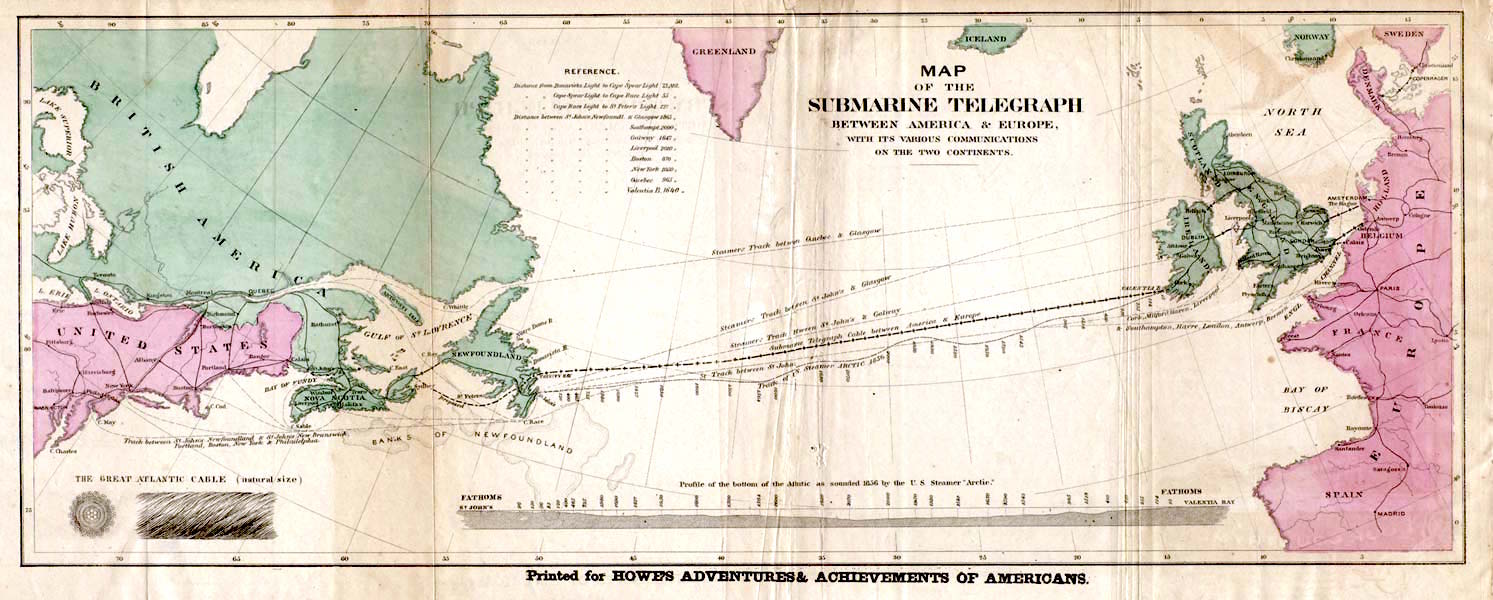|
Jacquet Island
Jacquet Island was a phantom island charted at approximately in the Atlantic Ocean, North Atlantic, just to the east of the Flemish Cap. Belief in its existence continued into the 19th century, when it was discussed by cartographers as a possible midway point for the transatlantic telegraph cable. John Scott of the ''Seaflower'' reported seeing it in 1836. References Phantom islands of the Atlantic Islands of the North Atlantic Ocean {{marine-geo-stub ... [...More Info...] [...Related Items...] OR: [Wikipedia] [Google] [Baidu] |
Phantom Island
A phantom island is a purported island which was included on maps for a period of time, but was later found not to exist. They usually originate from the reports of early sailors exploring new regions, and are commonly the result of navigational errors, mistaken observations, unverified misinformation, or deliberate fabrication. Some have remained on maps for centuries before being "un-discovered." Unlike lost lands, which are claimed (or known) to have once existed but to have been swallowed by the sea or otherwise destroyed, a phantom island is one that is claimed to exist contemporaneously, but later found not to have existed in the first place (or found not to be an island, as with the Island of California). Examples Some may have been purely mythical, such as the Isle of Demons near Newfoundland, which may have been based on local legends of a haunted island. The far-northern island of Thule was reported to exist by 4th century BCE Greek explorer Pytheas, but informati ... [...More Info...] [...Related Items...] OR: [Wikipedia] [Google] [Baidu] |
Atlantic Ocean
The Atlantic Ocean is the second-largest of the world's five oceans, with an area of about . It covers approximately 20% of Earth's surface and about 29% of its water surface area. It is known to separate the " Old World" of Africa, Europe and Asia from the "New World" of the Americas in the European perception of the World. The Atlantic Ocean occupies an elongated, S-shaped basin extending longitudinally between Europe and Africa to the east, and North and South America to the west. As one component of the interconnected World Ocean, it is connected in the north to the Arctic Ocean, to the Pacific Ocean in the southwest, the Indian Ocean in the southeast, and the Southern Ocean in the south (other definitions describe the Atlantic as extending southward to Antarctica). The Atlantic Ocean is divided in two parts, by the Equatorial Counter Current, with the North(ern) Atlantic Ocean and the South(ern) Atlantic Ocean split at about 8°N. Scientific explorations of the A ... [...More Info...] [...Related Items...] OR: [Wikipedia] [Google] [Baidu] |
Flemish Cap
The Flemish Cap is an area of shallow waters in the north Atlantic Ocean centered roughly at 47° north, 45° west or about 563 km (350 miles) east of St. John's, Newfoundland and Labrador. The shallow water is caused by a wide underwater plateau covering an extended area of 42,000 km² (12,000 square miles). Depths at the cap range from approximately 122 m (400 feet) to 700 m (2,300 feet). The Flemish Cap is located within an area of transition between the cold waters of the Labrador Current and warmer waters influenced by the Gulf Stream. The mixing of the warmer and colder waters over the plateau produces the characteristic clockwise circulation current over the cap. The waters of the Flemish Cap are deeper and warmer than the Grand Banks of Newfoundland. The 58,000-square-kilometre area may have served as an important refuge for marine species during the last ice age. [...More Info...] [...Related Items...] OR: [Wikipedia] [Google] [Baidu] |
Transatlantic Telegraph Cable
Transatlantic telegraph cables were undersea cables running under the Atlantic Ocean for telegraph communications. Telegraphy is now an obsolete form of communication, and the cables have long since been decommissioned, but telephone and data are still carried on other transatlantic telecommunications cables. The first cable was laid in the 1850s from Valentia Island off the west coast of Ireland to Bay of Bulls, Trinity Bay, Newfoundland. The first communications occurred on 16 August 1858, but the line speed was poor, and efforts to improve it caused the cable to fail after three weeks. The Atlantic Telegraph Company led by Cyrus West Field constructed the first transatlantic telegraph cable. The project began in 1854 and was completed in 1858. The cable functioned for only three weeks, but was the first such project to yield practical results. The first official telegram to pass between two continents was a letter of congratulations from Queen Victoria of the United ... [...More Info...] [...Related Items...] OR: [Wikipedia] [Google] [Baidu] |
Phantom Islands Of The Atlantic
Phantom may refer to: * Spirit (animating force), the vital principle or animating force within all living things ** Ghost, the soul or spirit of a dead person or animal that can appear to the living Aircraft * Boeing Phantom Ray, a stealthy unmanned combat air vehicle * Boeing Phantom Eye, a High Altitude, Long Endurance (HALE) unmanned aerial vehicle * McDonnell FH Phantom, a jet fighter aircraft, introduced 1947 * McDonnell Douglas F-4 Phantom II, a supersonic air-defense fighter and fighter-bomber, introduced 1960 * Phantom X1, ultralight aircraft * Phantom (UAV), a series of unmanned aerial quadcopters developed by DJI Boats *DC‐14 Phantom – an American catamaran design *Flying Phantom Elite – a French hydrofoil catamaran sailboat design * Flying Phantom Essentiel – a French hydrofoil catamaran sailboat design *Phantom 14 – an American lateen-rigged sailboat design * Phantom 14 (catamaran) – an Italian sailboat design * Phantom 16 (catamaran) – an Italian sail ... [...More Info...] [...Related Items...] OR: [Wikipedia] [Google] [Baidu] |


